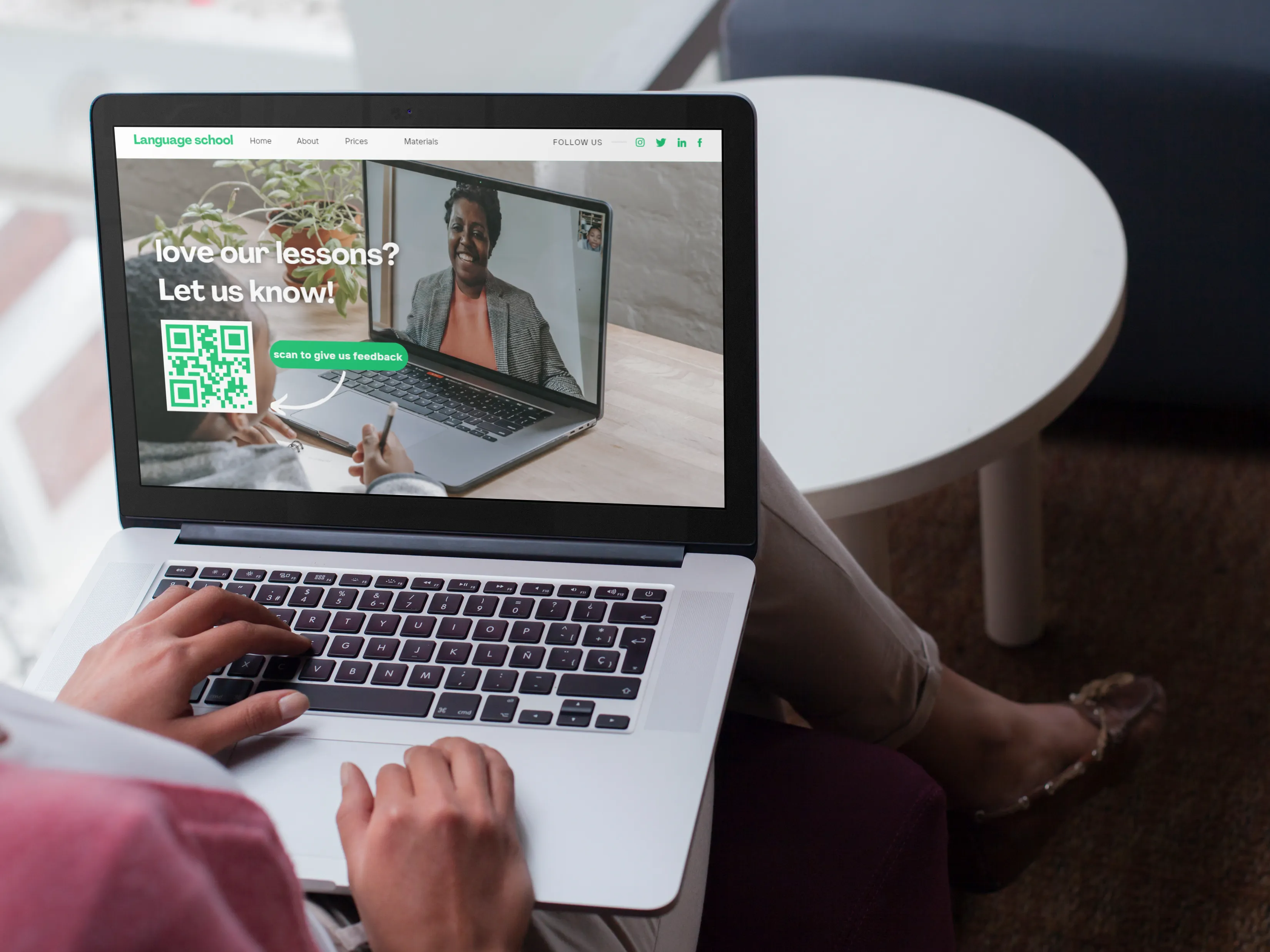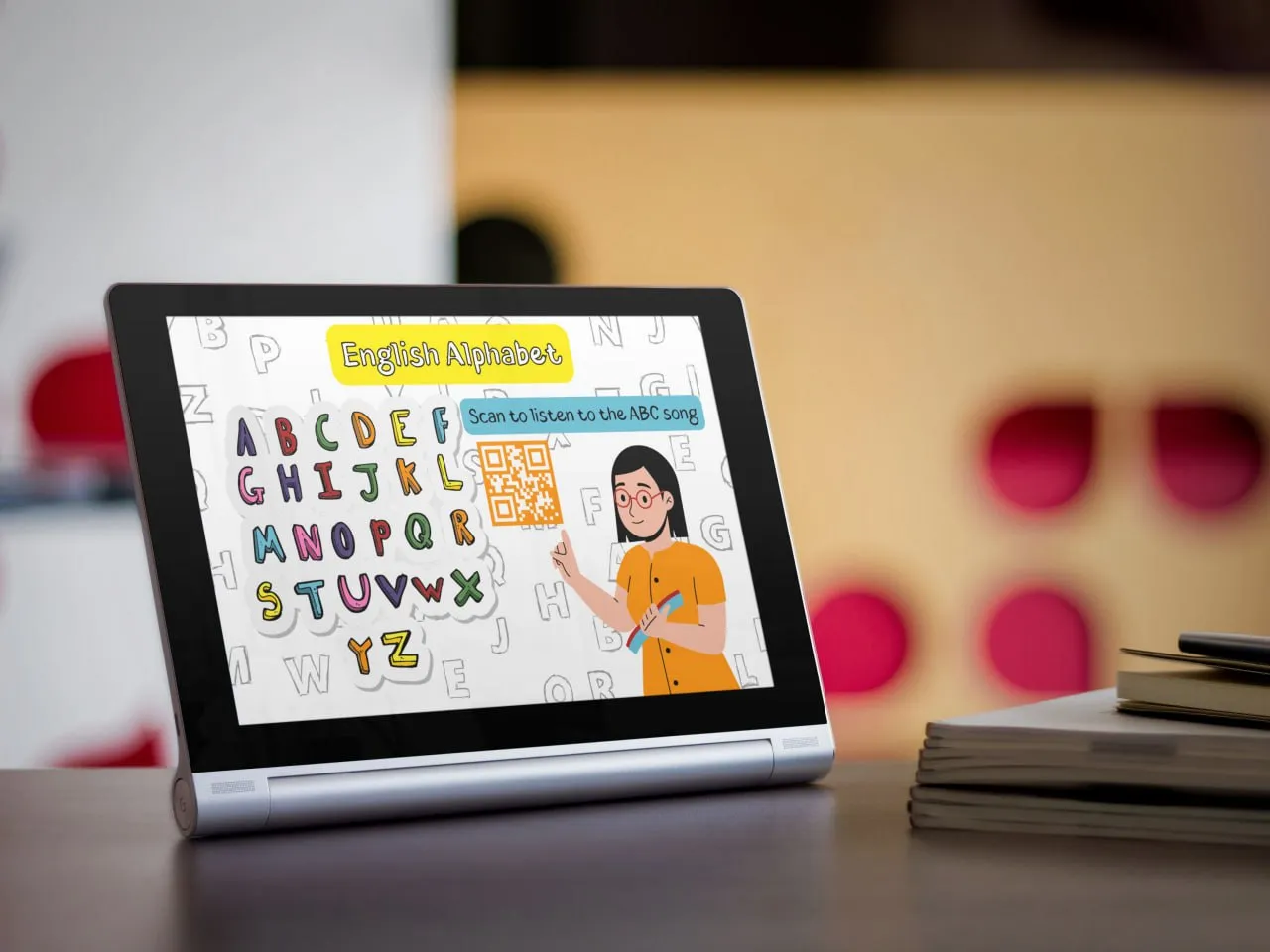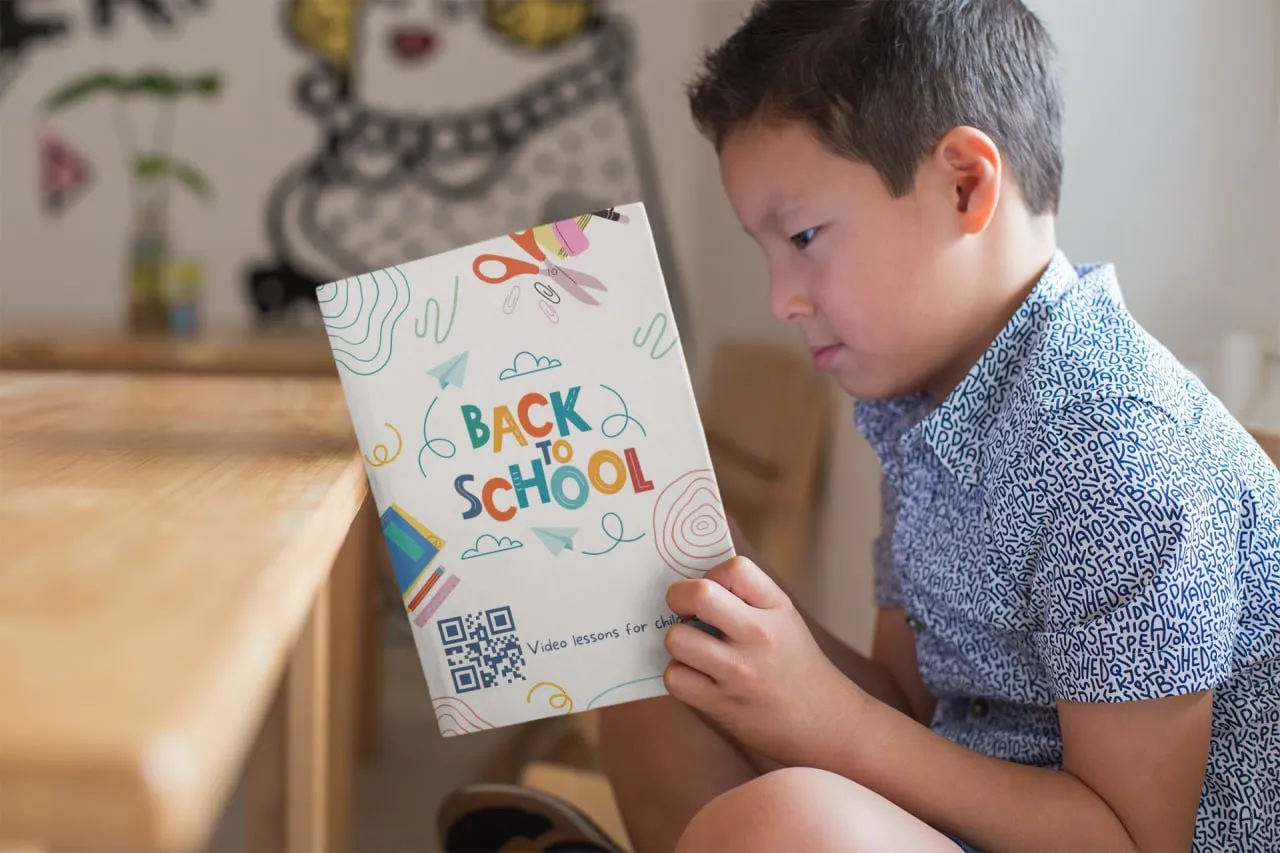

Table of Contents
1.
Introduction
2.
Enhancing Interactive Learning
3.
Exploring the Transformative Role of QR Codes in Modern Schools
4.
Promoting Student Engagement and Autonomy through QR Codes
5.
How to Create Your Own QR Codes for Classroom
6.
Conclusion
In today's rapidly evolving digital landscape, technology has become an integral part of education. One such innovation that is making its mark in UK schools is the use of QR codes within classrooms. QR codes, or Quick Response codes, have gained popularity due to their convenience and versatility. Let's delve into how these unassuming black-and-white squares are enhancing the learning experience in UK classrooms.

Introduction
QR codes, initially designed for industrial applications, have found their way into education. These matrix barcodes store information that can be swiftly accessed by scanning them with a smartphone or tablet. As QR codes become more prevalent, they are transforming the traditional classroom setup, offering a multitude of benefits that cater to both educators and students.Enhancing Interactive Learning
Traditional teaching methods are gradually giving way to more interactive and engaging approaches. QR codes play a pivotal role in this transition. Educators can embed QR codes into learning materials, allowing students to access additional content such as videos, infographics, and interactive simulations. This approach caters to different learning styles, ensuring that visual, auditory, and kinesthetic learners can all grasp the concepts effectively. Interactive learning experiences foster deeper understanding and retention of the subject matter.
Exploring the Transformative Role of QR Codes in Modern Schools
In an age of constant technological innovation, the utilization of QR codes in educational institutions has emerged as a powerful tool, revolutionizing the way students and teachers interact with information. These unassuming, pixelated patterns are making a remarkable impact within the walls of schools, enhancing engagement, streamlining processes, and fostering a dynamic learning environment.Empowering Interactive Learning
The traditional classroom setup often involves one-way communication, with teachers imparting knowledge and students consuming it. QR codes are changing this dynamic by transforming static resources into interactive gateways. Educators can embed QR codes within textbooks, posters, or handouts, linking them to supplementary materials such as videos, podcasts, or online simulations. This not only caters to different learning styles but also injects an element of exploration and discovery into the learning process.Efficiency in Information Dissemination
Communication is the backbone of any educational institution. QR codes provide an efficient means of sharing information with students, parents, and staff. School newsletters, event schedules, and important announcements can be encoded into QR codes and easily scanned by recipients. This paperless approach not only saves resources but also ensures that information reaches its intended audience instantaneously, bridging the gap between the school and its stakeholders.Seamless Attendance and Access Management
QR codes are streamlining administrative tasks as well. Morning roll calls, once a time-consuming ritual, can now be swiftly completed by having students scan their unique QR codes upon entry. This automation not only saves valuable instructional time but also reduces the scope for errors. Additionally, schools are employing QR codes to manage access to various facilities, ensuring that only authorized individuals can enter specific areas.Gamifying Learning through QR Codes
Injecting an element of gamification into education can significantly enhance engagement. QR codes provide a gateway to achieve this. Teachers are creating educational scavenger hunts where students decode QR codes to reveal clues or information that leads to the next challenge. This approach makes learning exciting, encourages teamwork, and reinforces subject matter comprehension in a memorable way.Efficient Resource Utilization
Schools are increasingly relying on QR codes to optimize resource allocation. Textbooks, which can be heavy and cumbersome, are being supplemented with QR codes that link to digital versions of the same content. This reduces the load students carry and ensures that learning materials are easily accessible, both within and outside the classroom. Moreover, schools can use QR codes to label equipment, making inventory management and maintenance more efficient.Enhancing Parental Involvement
Parent-teacher communication plays a crucial role in a student's educational journey. QR codes simplify this process by providing a direct link between parents and teachers. By scanning a QR code, parents can access real-time updates on their child's academic progress, upcoming assignments, and school events. This instant connection fosters a stronger partnership between home and school, contributing to the overall development of the student.L2QR
The QR code platform offers effective e-marketing solutions
Create your QR code design that will meet your brand standards with colors

Promoting Student Engagement and Autonomy through QR Codes
QR codes are proving to be more than just black and white squares; they're becoming the catalyst for promoting student engagement and autonomy in the learning process. By harnessing the power of QR codes, educators are providing students with opportunities to take control of their learning journey in innovative and exciting ways. Here's how QR codes are transforming traditional classrooms into hubs of dynamic and self-directed learning:Empowerment for Self-Directed Exploration
QR codes place the reins of learning firmly in the hands of students. Educators can create QR code-based activities that encourage exploration beyond the confines of textbooks. For example, a science class studying ecosystems could have QR codes that lead to virtual tours of diverse ecosystems around the world. This approach sparks curiosity, enabling students to dive deep into topics that resonate with them personally.
Access to Rich Learning Resources
By scanning a QR code, students can access a treasure trove of resources that extend beyond what's covered in the classroom. Imagine a literature class where QR codes connect students to interviews with authors or analyses of literary techniques. This wealth of supplementary materials not only enriches their understanding but also encourages them to view learning as a continuous and multifaceted process.
Engagement through Scavenger Hunts
QR codes turn learning into an interactive adventure. Teachers can design scavenger hunts where QR codes act as clues leading students to different locations within the school premises. Each scanned QR code unveils a new riddle, challenge, or piece of information that must be deciphered or completed. This gamified approach not only makes learning exciting but also enhances teamwork and critical thinking.
Dynamic and Interactive Quizzes
Traditional quizzes are getting a makeover with QR codes. Instead of handing out paper-based quizzes, educators can create interactive quizzes linked to QR codes. Students scan the codes to access the quiz questions, and their answers are submitted digitally. This approach provides instant feedback, reducing the wait time for results and allowing students to identify areas of improvement promptly.Personalized Learning Pathways
QR codes open doors to personalized learning experiences. A math class, for instance, could offer QR codes that link to different levels of practice problems based on individual proficiency. Students who grasp concepts quickly can access more challenging problems, while those needing extra practice can access remedial exercises. This tailoring of content empowers students to progress at their own pace.Real-World Connections
QR codes bridge the gap between classroom learning and real-world applications. In a history class, QR codes can provide links to news articles about current events related to historical occurrences. This connection to contemporary contexts not only makes history relevant but also encourages students to see the value of historical knowledge in understanding today's world.How to Create Your Own QR Codes for Classroom
Creating personalized art QR codes for your classroom activities and resources can bring a creative and interactive dimension to your teaching. With a few simple steps, you can design engaging QR codes that capture your students' attention and enhance their learning experience. Here's a step-by-step guide to crafting your own art QR codes for the classroom:
1.Sign up on Link-to-QR.comGo to link-to-qr.com. Our platform offers an intuitive and user-friendly interface for generating QR codes with a personalized touch for free.
2.Select the Type of QR Code:Depending on your classroom needs, choose the appropriate type of QR code. You might want to create QR codes that link to educational websites, videos, interactive quizzes, or additional learning materials.
3.Provide Relevant Information:Fill in the necessary details, such as the URL of the educational resource you want to link to the QR code. This could be a webpage, a PDF file, or any online content that complements your lesson.
4.Generate Your QR Code:Click on the "Generate QR code" button to create the basic QR code associated with your provided content. This step ensures that your QR code functions correctly.
5.Add Artistic Elements:To infuse your QR code with an artistic flair, look for the option to incorporate art QR patterns. Upload images that align with your lesson theme or subject. For instance, if you're teaching about space, you can use images of planets, stars, or rockets.

6.Test for Functionality:
Before finalizing your art QR code, ensure its functionality by testing it with various QR code scanner apps. Confirm that it correctly directs students to the intended resource or activity.
7.Download and Share:Once you're satisfied with the design and functionality, download the art QR code in formats such as PNG or SVG. Print and display the QR code in your classroom or incorporate it into your digital materials.
Conclusion
The integration of QR codes within the realm of education marks a significant and transformative phase. This unassuming technology, once confined to commercial and marketing uses, has found a compelling purpose within the walls of schools. As we reflect on the journey of QR codes in education, it becomes evident that their impact is not just theoretical, but tangibly changing the way education is delivered, experienced, and perceived.A Multimedia-Rich Learning Landscape
The traditional notion of textbooks has undergone a remarkable transformation with the infusion of QR codes. These once-static learning materials have evolved into gateways of multimedia-rich experiences. The integration of videos, interactive simulations, and virtual tours has redefined how students engage with and comprehend complex subjects. QR codes have ushered in an era where learning is no longer confined to printed words, but extends into the dynamic realm of audiovisual stimulation.
Efficiency, Engagement, and Innovation
QR codes aren't limited to just enhancing the content within the classroom; they are also catalysts for efficiency and innovation. Administrative tasks that once consumed valuable time and resources are now streamlined through the quick scanning of QR codes. Morning roll calls, information dissemination, and access management have all been optimized, allowing educators to allocate more time to meaningful instruction.
Moreover, the gamification of learning through QR codes has injected a sense of engagement and excitement into education. From scavenger hunts to interactive quizzes, these codes have turned the classroom into an interactive playground, fostering collaboration, critical thinking, and problem-solving skills among students.
Technology as an Enabler of Learning
The journey of QR codes in education is emblematic of the broader role of technology as an enabler of learning. As the educational landscape continues to evolve, the integration of QR codes serves as a testament to the potential of technology to reshape and enhance the learning journey. These unassuming codes stand as proof that technology, when harnessed thoughtfully and creatively, can bridge gaps, facilitate personalized learning, and foster a culture of innovation.
The Promise of an Enriched Future
As we embrace the QR code revolution in education, we recognize that this is just the beginning. The evolving landscape of technology promises even more seamless integrations and innovations, further enhancing the educational experience. QR codes have paved the way for a future where learning is dynamic, engaging, and tailored to individual needs.
In conclusion, the era of QR codes in education is not a fleeting trend, but a transformative movement that has already left an indelible mark. From multimedia-enhanced learning materials to streamlined administrative processes, QR codes have ushered in an era of efficiency, engagement, and innovation. Their integration is a testament to the power of technology to revolutionize education, shaping a future where students and educators alike are empowered to embrace learning in its most dynamic and impactful form.